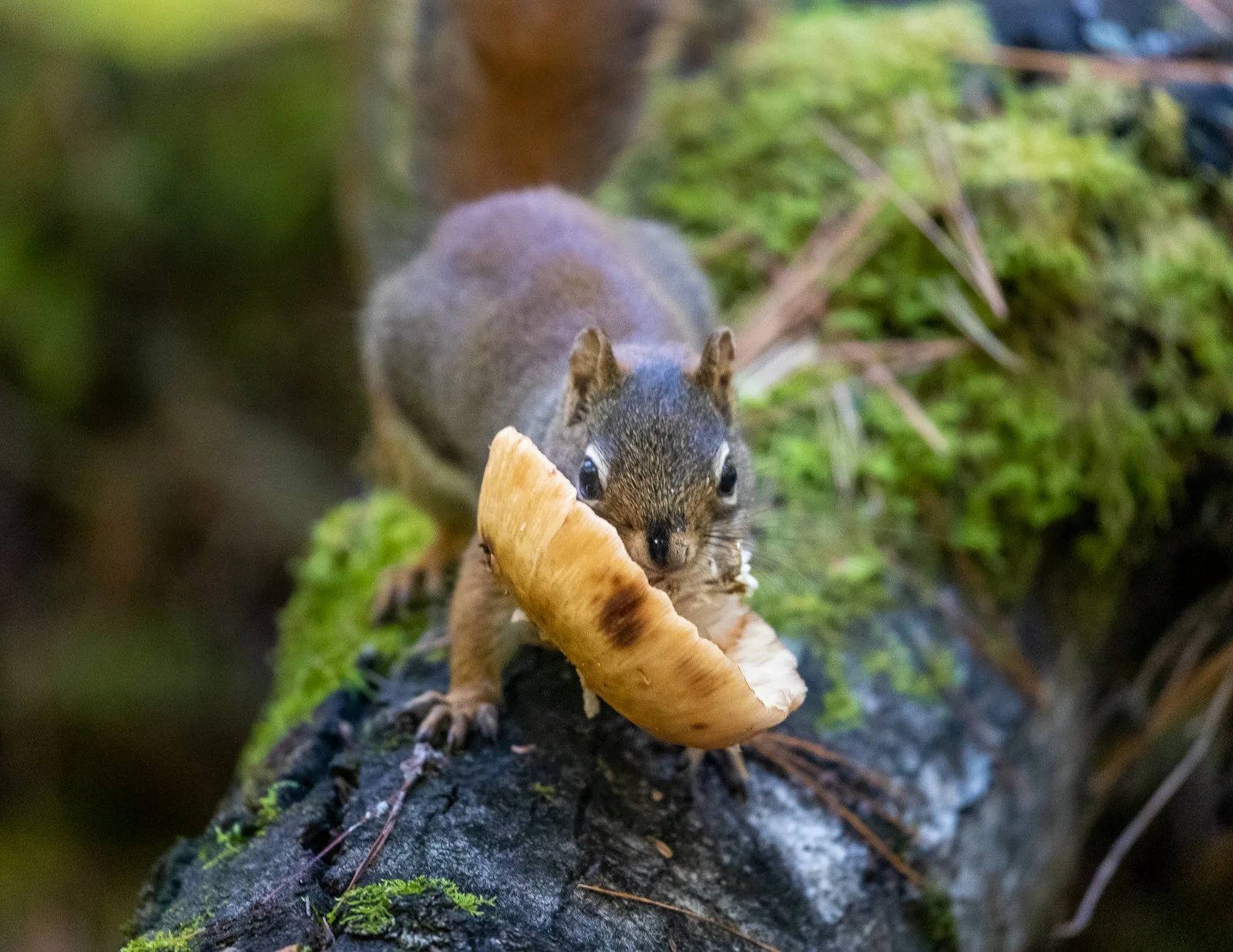December 5 is World Soil Day, and we want to celebrate with some of the tiny organisms that keep Voyageurs’ soil healthy - fungi! While we are boating, camping, and hiking, fungi are hard at work breaking down organic material and making nutrients available to other living organisms, leaving Voyageurs' forest floors healthy and free of piles of dead leaves and logs.
Hikers along Voyageurs’ trails might spot stripey brown shelves jutting out from logs or red umbrellas popping up through the soil in summer and fall, but what we see is only part of the fungus story; fungi’s magic happens below the surface. In the ground or log hosting that fungus is a network of fine, white, hair-like structures called hyphae (HI-fee). Hyphae connect and form a web-like structure called mycelium (my-SEE-lee-uhm). Think of hyphae as a finger and mycelium as a whole hand, hard at work keeping the soil healthy.
Fox squirrel with mushroom cap. Photo credit: Halie Saferstein
The mycelium releases enzymes that break down woody debris, leaf litter, and other dead organic material, and allow the mycelium to gather its nutrients. These enzymes are even able to break down a log’s tough, complex lignin, a compound that makes bark and wood strong. This breakdown process makes nutrients more abundant and available in the soil. And when fungi grow on a plant’s roots (called mycorrhizal [my-koh-RYE-zal] fungi), it is able to transfer those nutrients to the plant. Fungi keep nutrients cycling through the soil and sustain the forest ecosystem while sustaining themselves.
As the mycelium works below the surface, collecting and transferring water and nutrients, it feeds the mushrooms that we see while hiking. These above-ground structures, called fruiting bodies, are specialized bundles of hyphae that grow above ground and form structures like gills, pores, or teeth on the underside of their cap. These gills, teeth, and pores release spores that function as the fungus’ seeds. When spores are dispersed by wind or animal and land in a suitable spot, they are able to put out hyphae to build a mycelium and eventually more fruiting bodies, and continue to keep the forest and its soils healthy.



